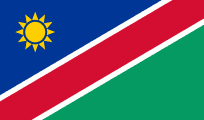Indonesia and Malaysia are locked in a dynamic race to dominate the global halal market, with both countries employing distinct strategies to achieve their ambitious goals. Indonesia, with its large Muslim population, is focusing on boosting its halal exports, while Malaysia is leveraging technology and strategic trade events to enhance its position.
Indonesia’s $64 Billion Export Push
Indonesia is aggressively pursuing its ambition to become the world’s leading producer of halal products. The Ministry of Industry is intensifying efforts, highlighted by the upcoming Halal Indonesia International Industry Expo (Halal Indo) 2025, scheduled for September 25–28 in Tangerang, Banten. This expo aims to attract 15,000 visitors and generate transactions exceeding Rp2 billion. In 2024, Indonesia’s halal industry achieved US$64.11 billion in export transactions.

While Indonesia has advanced to third place globally, according to the State of the Global Islamic Economy Report 2023/2024, it still trails behind Malaysia and Saudi Arabia. The Halal Indo 2025 expo is a crucial step in Indonesia’s plan to bridge this gap and establish itself as a dominant force in the halal sector.
Malaysia’s AI-Driven MIHAS
Malaysia is also making significant strides, leveraging its established halal ecosystem and technological advancements. The 21st Malaysia International Halal Showcase (MIHAS) 2025, set to run from September 17 to 20 at the Malaysia International Trade and Exhibition Centre, aims to generate RM4.5 billion in global halal trade. A key driver of this ambition is the AI-powered Madani Digital Trade (MDT) platform, designed to enhance trade efficiency and market reach.

In 2024, Malaysia’s halal product exports reached RM61.5 billion, reinforcing its global leadership in the halal sector. The halal industry is projected to contribute 10.8% or RM231 billion, to Malaysia’s GDP by 2030, underscoring its economic significance.
Market Growth and Future Trends
The global halal food market is projected to reach USD 9.45 trillion by 2034, growing at a CAGR of 12.42% from a value of USD 3.30 trillion in 2025. The Asia Pacific market alone is estimated at USD 1.49 trillion in 2025, expanding at a CAGR of 12.53% during the forecast period. This growth is driven by the increasing Muslim population and a rising awareness of halal standards.
Additionally, the global halal nutraceuticals market is predicted to grow at a CAGR of 8.05% over the forecast period 2025-2032, indicating a rising demand for halal-certified health and wellness products.

Conclusion
The halal race between Indonesia and Malaysia reflects a broader trend of growth and competition in the global halal market. Indonesia’s focus on boosting exports through strategic expos, combined with Malaysia’s AI-driven trade initiatives, highlights the diverse approaches countries are taking to capitalize on the expanding halal economy. As the market continues to grow, the strategies and investments of these key players will be crucial in shaping the future of the global halal industry.
